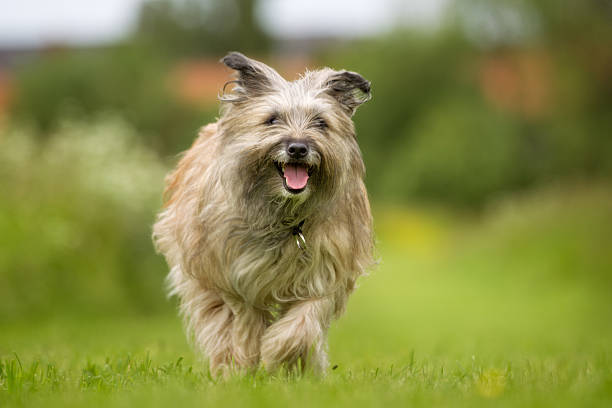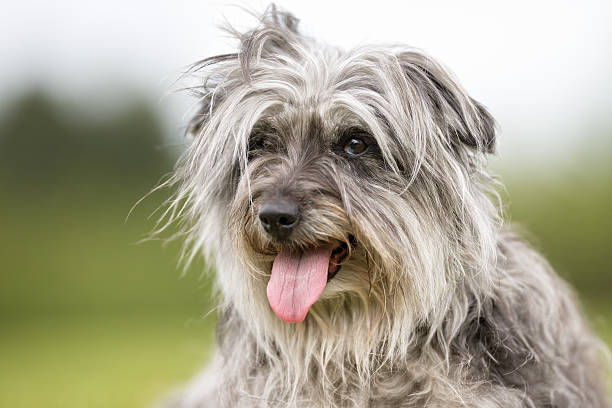Pyrenean Sheepdog

Breed History:
The Pyrenean Sheepdog is a herding breed native to the Pyrenees Mountains, straddling the border between France and Spain. Used for centuries by shepherds, this breed was developed to herd and guard flocks in rugged, mountainous terrain. Its agility, intelligence, and alertness made it an invaluable working dog for managing sheep in challenging environments.
Though there are three coat varieties—Smooth-Faced, Rough-Faced, and Long-Haired—the breed as a whole remains consistent in its herding abilities and strong bond with livestock. Historically, Pyrenean Sheepdogs were mostly working dogs rather than show dogs, gaining wider recognition only in the 20th century. Today, they remain prized both as herders and active, loyal family companions.
|
Gender |
Height |
Weight |
|
Male |
45–51 cm |
12–15 kg |
|
Female |
43–48 cm |
11–14 kg |
Size – Medium
Life Expectancy: 12–14 years

Breed Appearance:
The Pyrenean Sheepdog is a compact, agile dog with a strong, muscular build suited for mountainous herding. It comes in three coat types:
-
Smooth-Faced: Shorter hair on the face, longer and rougher on the body.
-
Rough-Faced: Longer hair covering the face and body, giving a shaggy appearance.
-
Long-Haired: Long, flowing coat all over with feathering on legs and tail.
Coat colours vary but are mostly shades of fawn, grey, or sable, often with black masks or shading. Their eyes are expressive, dark, and intelligent, while their ears are triangular and either semi-erect or dropped, depending on the coat type. The tail is usually long and carried low, sometimes curling when excited.
Breed Type – Herding/Family:
True to its herding origins, the Pyrenean Sheepdog is intelligent, energetic, and highly alert. It forms strong bonds with its family and is protective of its territory and livestock. While naturally wary of strangers, it is affectionate and loyal to its household.
The breed thrives on mental stimulation and purposeful activity, making it an ideal companion for active owners or those involved in dog sports, herding, or outdoor pursuits. It requires firm, consistent leadership, but is responsive and eager to work.

Training:
Pyrenean Sheepdogs are highly trainable but can be independent thinkers due to their working heritage. Early socialisation and training are vital to develop good manners and curb any protective or wary tendencies.
Positive reinforcement methods work best, combined with regular mental challenges and physical exercise. This breed excels in obedience, agility, and herding trials, where its natural talents shine. Training should be engaging and consistent to maintain the dog’s interest.
Health & Care:
Overall, the Pyrenean Sheepdog is a healthy and hardy breed with few major health concerns. Occasionally, it can be prone to:
-
Hip dysplasia
-
Progressive retinal atrophy (PRA)
-
Allergies or skin sensitivities
Regular veterinary checkups, a balanced diet, and proper exercise keep the dog fit. The coat requires regular grooming to prevent mats and maintain skin health, especially for Rough-Faced and Long-Haired varieties.

Living Conditions:
This breed adapts well to homes with ample space and a yard, ideally with a secure fence, as it has a strong herding instinct and may try to herd children or other pets. It thrives in rural or suburban environments and prefers active households.
While adaptable, the Pyrenean Sheepdog is not ideal for apartment living without sufficient daily exercise and mental stimulation. It enjoys outdoor activities, hikes, and jobs that give it purpose.
Exercise:
Daily exercise is essential for this energetic breed. Long walks, runs, playtime, and mental challenges like obedience or scent work keep it happy and balanced. Without enough stimulation, the Pyrenean Sheepdog may become bored and develop undesirable behaviours.
Grooming:
-
Smooth-Faced: Weekly brushing to remove loose hair.
-
Rough-Faced and Long-Haired: More frequent brushing (2–3 times weekly) to prevent mats and tangles.
Bathing should be occasional unless the dog gets very dirty. Regular ear cleaning, nail trimming, and dental care are important to maintain overall health.

Advantages:
-
Intelligent and highly trainable herding dog
-
Loyal, protective, and affectionate with family
-
Versatile coat varieties to suit different preferences
-
Hardy and healthy with few major health problems
-
Energetic and well-suited to active owners and outdoor lifestyles
-
Natural watchdog and protector
Disadvantages:
-
Can be wary or reserved with strangers
-
Strong herding instincts may lead to nipping or chasing behavior
-
Requires consistent training and early socialization
-
Needs regular grooming, especially Rough-Faced and Long-Haired varieties
-
May not be suitable for sedentary or first-time dog owners
-
Can become bored and destructive without enough exercise and mental work

